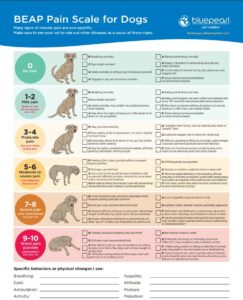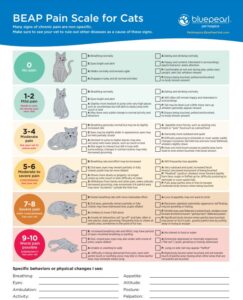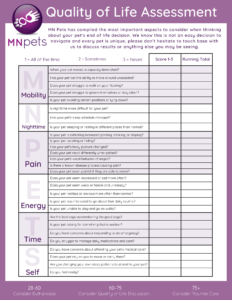There have been countless books published about the topics of pet loss and grief. It can be difficult to sort through all the choices to find the one that best suits your needs and interests. Here are some of our favorites.
Books for Children
The Dragonfly Door by John Adams. (Feather Rock Books, Inc. 2007)
Two insect friends, water nymphs Lea and Nym, play together in the marsh. While sleeping, Nym discovers that her friend Lea has died and gone to a new world as a dragonfly. This book is written by a local MN author. It is a beautiful allegory for death and is very gently told. It offers an optimistic concept of where the deceased “goes” after death. The book’s website also contains detailed lesson plans for presenting to elementary age children and plans for how to do a theatrical presentation.
Sammy in the Sky by Barbara Walsh, illustrated by Jamie Wyeth (Candlewick Press, 2011)
“Sammy, the best hound dog in the whole wide world, loves his girls and she loves him”. Sammy in the Sky is a beautiful book about more than just goodbyes, but also of celebrating love and memories. The author captures the dynamic sorrows and joys of having an animal companion in a way that touches hearts of all ages.
Saying Goodbye to Your Pet: Children Can Learn to Cope with Pet Loss by Marge Eaton Heegaard (Fairview Press Minneapolis, 2001)
Simple text and blank spaces in which to add drawings, teach children how to cope with the loss of a pet, including how to express their grief. Included are parental instructions for how to use the book and an educational background about grief and loss as it relates to children.
When Dinosaurs Die: A Guide to Understanding Death by Laurie Krasny Brown & Marc Brown (Little, Brown Books for Young Readers 1998)
This forthright book serves as a kid-friendly guide to death and dealing with the loss of a loved one. With Dinosaurs as the characters, it talks about what being alive and what dying means, along with the feelings people may experience when someone they know dies. This book may be most helpful to read before a death, but can also help answer questions kids often have, such as why we have funerals and how death is different than sleep. The book also includes a glossary with terms like autopsy, cremation and grave.
When You Have to Say Goodbye, Loving and Letting Go of Your Pet by Monica Mansfield, DVM. (Beanpole Books 2011)
This book characterizes the uniqueness of the relationship between children and pets and summarizes what happens when a pet becomes ill, including vet visits and lifespan. It talks about the choice to euthanize a pet and also talks about grieving and memorialization. It includes why our relationships with animals are special and comprehensively addresses many significant passages such as illness, lifespan, vet visits, end-of-life-decision making, grief and memorialization.
Saying Goodbye to Lulu by Corinne Demas. (Little, Brown & Co, 2004)
When her dog Lulu dies, a girl grieves but continues with her life findings ways to honor Lulu’s memory. This is an excellent story for parents to read to their children even before a pet is elderly or gone, as it can facilitate a discussion about how pets change and age. It can also help children find ways to tell their own story and verbalize their experiences.
Stay by Katie Klise (Feiwel & Friends, 2017)
A little girl named Astrid and her aging dog, Eli, set off to complete Eli’s bucket list, including fine dining, playing at a playground and more. Eli and Astrid make beautiful memories together and Eli’s favorite part is the time he gets to spend with his best friend.
The Rough Patch by Brian Lies (Greenwillow Books, 2018)
Evan has the heartbreaking experience of losing his dog who is his very best friend. In his grief, Evan destroys the garden they had planted together and the weeds soon take over the space. However, out of the overgrown plot, a beautiful pumpkin begins to grow, and it leads Evan to push through his grief to begin a beautiful adventure.
City Dog, Country Frog by Mo Willems (Hyperion Books, 2010)
A city dog and country frog strike up a unique friendship and spend the summer playing together. However, as the seasons change, so does their friendship. In this book, city dog learns how to adapt to life changes and carry on his friendship with his frog friend in new ways.
Books Suitable for Teens
Deconstruction/Reconstruction: A Grief Journal for Teens created by The Dougy Center
The Dougy Center designed this journal specifically for teenagers. It guides teens through prompts and activities that help them process their loss and grief. It’s a “advice-free place where teens can draw, write, paint, and transform whatever they are thinking and feeling”.
Healing a Teen’s Grieving Heart: 100 Practical Ideas for Families, Friends and Caregivers by Dr. Alan Wolfelt. (Companion Press, 2001)
This book provides 100 practical ideas for parents or other caregivers to help teens process the death of a loved one and cope with the grief they are feeling. It focuses on the unique issues that teens face, such as talking with a teacher about missing schoolwork or maintaining relationships with other teens who haven’t experienced a loss and may not understand. Each idea provides a prompt or activity to focus on, it explains why this may be helpful for the teen, and it gives a practical “to do” for that day. This book is an excellent resource for someone who is unsure how to connect or talk with a teen to help support them through a loss.
Healing Your Grieving Heart ‘For Teens’: 100 Practical Ideas by Dr. Alan Wolfelt. (Companion Press, 2001)
This book provides 100 practical ideas for teens who are mourning a loss. The writing is directed to teens and contain relevant, useful tips on how to express oneself, how to cope with friends or at school, how to heal, and more. Each idea has a few helpful tips and then includes an “express yourself” section that provides a concrete action the teen can take to express their grief in some way. This book is for teens who have experienced a loss.
Books for Adults
Saying Goodbye to your Angel Animals: Finding Comfort After Losing Your Pet by Allen and Linda Anderson. (New World Library, 2008)
In this thoughtful book, Allen and Linda Anderson walk you through the numbing pain and dreadful sense of loss that arise when a beloved animal dies. They offer solace to help you deal with grief, remember and honor key moments in the animal’s life, find comfort through groups and with professionals, and get past the depression. They also include exercises, affirmations, and meditations to use through the various stages of grief. The Andersons’ caring, practical advice covers all aspects of pet loss.
Goodbye Friend, Healing Wisdom for Anyone Who Has Ever Lost a Pet by Gary Kowalski. (New World Library, revised 2012)
From the moment pets come into our lives, we know the day will arrive when we have to say farewell. Still, we are never emotionally prepared for the last adieu. Filled with heartwarming stories and practical guidance on such matters as taking care of yourself while mourning, creating rituals to honor your pet’s memory, and talking to children about death.
Saying Goodbye To The Pet You Love: A Complete Resource To Help You Heal by Lorri A. Greene, Ph.D. and Jacquelyn Landis. (New Harbinger Publications, 2002)
This book is a thorough resource that addresses vital themes in the grief process, providing education, self-assessment tests, and strategies for working with specific challenges that are part of grieving. The authors discuss why animals are so important to people, helping us understand the nature of our bond with animals and therefore why losing them can be especially traumatic.
To Bless the Space Between Us, A Book of Blessings by John O’Donohue. (Doubleday, 2008)
From the author of the bestselling Anam Cara comes a beautiful collection of blessings to help readers through both the everyday and the extraordinary events of their lives.This books blends poetic language and spiritual insight and offers readers comfort and encouragement on their journeys through life. O’Donohue looks at life’s thresholds and offers invaluable guidelines for making the transition from a known, familiar world into a new, unmapped territory.
Facing Farewell – Making The Decision To Euthanize Your Pet by Julie Reck, DVM. (Dogwise Publishing, 2012)
Author Julie Reck is a veterinarian who has devoted her professional career to helping owners make more informed decisions about euthanasia. In Facing Farewell, readers are provided with a complete description of the euthanasia procedure so that we know what to expect and can feel confident that we have made the right choice for both ourselves and your pet.
Books by local authors
Living with Grace: A Story of Love and Healing, Leaving Paw Prints on the Heart by Marita Rahlenbeck. (Star of Light Publications, 2019)
Good Grief: Finding Peace After Pet Loss: Personal and Professional Insights on the Animal Lover’s Unique Grieving Process by Sid Korpi. (Healy House Books, 2009)



